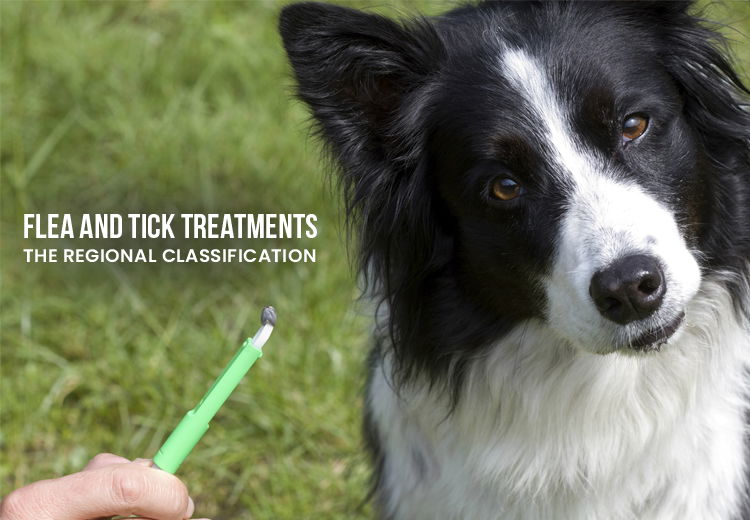 May 22, 2018
May 22, 2018

Fleas and ticks are excruciatingly pestering once they make home in our pets and surroundings. They crawl and take blood meals from our innocent furry companions transmitting a multitude of diseases in the process. A flea infestation is not just debilitating to the pet’s health but it also gets on our nerves thwarting every possible effort of eradication. Swarming in great numbers in the warm and humid regions already, their population also multiplies as the temperature surges. Therefore, location is an indispensable factor while deciding the sort of treatment and measures the pet would require.
Flea population develops drastically when the temperatures cross 65 degrees and most of the regions that show this spike come under High Flea Alert. An average temperature of 40 to 60 degrees is classified under Moderate and below 40 under ‘Low Flea Alert’ regions. Living in such warm surroundings with heavy flea infestation is deterring and requires year-round protection to keep your pet free of pests.
Southern parts of United States are way hotter compared to the northern or central regions and usually experience 80 percent humidity. This makes for an ideal condition for fleas and ticks to grow unprecedentedly. Opting for a spot-on solution like Frontline Plus or K9 Advantix or resorting to oral treatments like Capstar can bring great relief from flea infestation and related allergies within a day. In fact, the treatment must be continued throughout the year due to the heavy flea population in your region.
These topical treatments are easy to apply and being waterproof, can also protect the pets staying in regions with humid to wet climate. The rain showers won’t be able to wash the applied solution and will work even if the pet swims.
Coming over to the cold and freezing areas where the temperatures are always low, fleas don’t occur year round so the pet owner only needs to prepare himself for the peak flea month when there is a slight rise in the degrees.
Ticks, on the other hand, occur throughout the year. Brown, American, and deer ticks have thick populations on the West Coast i.e in California and nearby regions. Other than that, most of the species are present along the Southern and East Coast of United States with all four types of ticks (American, Brown, Deer and Lone Star Ticks) thriving in the regions. In such areas, besides providing flea and tick treatment solution or oral treatments throughout the year, using Seresto collars or Kiltix can provide additional protection against these pesky parasites.
Well then, I guess you all must have got a fair idea by now that location does play an important role in deciding the treatments and its usage.